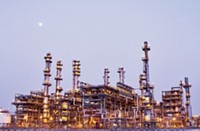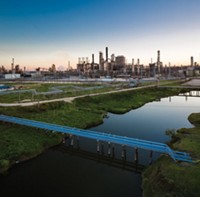Advertisement
Grab your lab coat. Let's get started
Welcome!
Welcome!
Create an account below to get 6 C&EN articles per month, receive newsletters and more - all free.
It seems this is your first time logging in online. Please enter the following information to continue.
As an ACS member you automatically get access to this site. All we need is few more details to create your reading experience.
Not you? Sign in with a different account.
Not you? Sign in with a different account.
ERROR 1
ERROR 1
ERROR 2
ERROR 2
ERROR 2
ERROR 2
ERROR 2
Password and Confirm password must match.
If you have an ACS member number, please enter it here so we can link this account to your membership. (optional)
ERROR 2
ACS values your privacy. By submitting your information, you are gaining access to C&EN and subscribing to our weekly newsletter. We use the information you provide to make your reading experience better, and we will never sell your data to third party members.
Business
Aramco and SABIC advance oil-to-chemicals
The large plant will deepen Aramco’s involvement with the chemical industry
by Alexander H. Tullo
December 4, 2017
| A version of this story appeared in
Volume 95, Issue 48

In a move meant to diversify the Saudi economy beyond oil exports, SABIC and the Saudi national oil company Saudi Aramco are advancing plans for an oil-to-chemicals project in Saudi Arabia.
Following a year-long study, the companies, two of the kingdom’s largest, will commence engineering and design of the multi-billion-dollar complex before they come to a final investment decision.
Most of the world’s petrochemical complexes make chemicals such as ethylene and propylene in steam crackers that process naphtha, which is produced in oil refineries, or natural gas liquids. The complex SABIC and Aramco are planning would make 9 million metric tons of chemicals and base oils per year from 400,000 barrels per day of crude oil.
Aramco and SABIC haven’t taken the wraps off their process or said what derivatives the plant would produce when it starts in 2025.
Clyde Payn, CEO of the Catalyst Group, a technology consulting firm currently studying oil-to-chemicals processes, says the venture’s setup will likely begin with a hydrocracker that breaks down heavy oil into shorter-chain hydrocarbons. This stream is then fed into a fluidized catalytic cracker for conversion into olefins and other products. In contrast, ExxonMobil’s new oil-to-chemicals plant in Singapore is a modified steam cracker, Payn points out.
It’s easy to see the appeal of making chemicals from oil, Payn says. The transportation fuel market is growing by only 2% annually, while the chemicals market is expanding by more than 5% per year. “Any integrated refiner and chemical producer should be seriously reevaluating where they want to be 10 years from now,” he says.




Join the conversation
Contact the reporter
Submit a Letter to the Editor for publication
Engage with us on Twitter